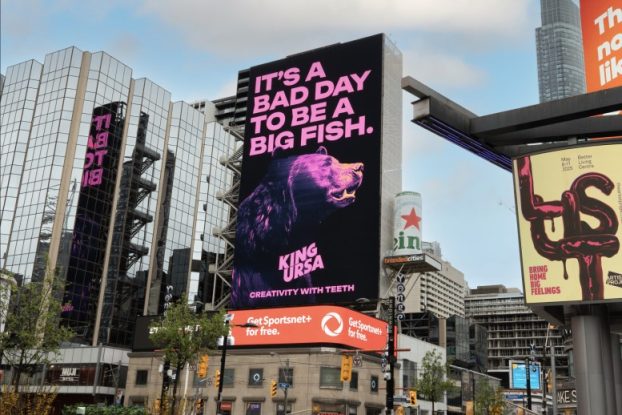Updated Nov. 9, 10:26 a.m.
As provincial governments continue to announce their plans for the retail of recreational cannabis, the Coalition for Responsible Cannabis Branding has taken a first step to help clarify another major regulatory issue by releasing a set of proposed guidelines on cannabis advertising and marketing.
The report, Adult Use Cannabis Advertising and Marketing Guidelines for Licensed Producers, was prepared in partnership with the Canadian Medical Cannabis Council and Cannabis Canada Association. The coalition also worked closely with Advertising Standards Canada, the national self-regulatory advertising body, on its recommendations.
The coalition’s recommendations are guided by five principles: that producers will only promote brand preference (not the consumption of cannabis itself) and will not encourage non-users to become consumers; that producers will not direct their marketing at people under the age of 18 (or the province’s designed legal age); that all advertising will contain responsible use statements; that producers may voluntarily opt to submit their advertising for pre-clearance with Ad Standards Canada; and that producers agree to abide by the provisions set out in the Canadian Code of Advertising Standards.
Additional guidelines in the proposal include not implying consumption, not associating cannabis with driving or other skilled activities while impaired, not using sexual or violent language or imagery in the names for strains and not using characters, animals or activities that appeal particularly to young people.
Also, the guidelines state that cannabis marketing cannot, directly or indirectly, suggest that cannabis use in adults has any health or therapeutic effects, though producers can state they have been licensed or authorized by Health Canada if they choose. Advertising can promote a brand or strain’s flavour and taste and make factually based claims about non-therapeutic brand attributes.
Steering clear of medical health claims could help the recreational cannabis industry avoid being subject to the same regulations applied to the pharmaceutical space, and Ray Gracewood, chief commercial officer of New Brunswick-based producer Organigram, says he believes the guidelines still leave room to discuss things like holistic health as part of a brand positioning.
“That, in no way shape or form, puts us down a path where we’re making claims about therapeutic effects, because we don’t have the technical research behind it to be able to validate that,” Gracewood says. “Our thinking, going into the adult recreational space, we would be of the same mindset. Until there’s actual research to back up some of those claims, we wouldn’t be able to validate that.”
In a statement, Cameron Bishop, co-chair of the coalition, said that the guidelines would help ensure the legalized cannabis industry can compete with the illicit market, something echoed by both Gracewood and Alison Gordon, the recently named CEO of Ontario-based 48 North, who adds that the guidelines allow for a level of branding and marketing that will ultimatley help legal producers succeed over the black market.
“We’re faced with the possibility of nothing, like pharma or tobacco, so in some ways something is better than nothing,” Gordon says. “The challenge with our industry is that I can be growing ‘purple kush’ and you can be growing ‘purple kush’ and we are going to grow two very different plants. The fact that the guidelines allow for brand preference is important, because you can decide that my ‘purple kush’ is the one that suits you best and you know how it’s going to make you feel. Allowing us to talk about those things and create brands that consumers know and trust is what will set us up for success.”
The recommendations would also allow producers of all sizes to target adult consumers with messages explaining exactly why their products are better than those offered in the illegal market. Eliminating the black market was cited as a key motivator for legalizing cannabis at the federal level and has been a repeated message in the retail plans announced so far by the provincial governments of Ontario, New Brunswick, Alberta and Manitoba.
The coalition points out that its proposed guidelines are stricter than those currently used in the alcohol industry. In addition to mandatory responsible use statements and adherence to the Canadian Code of Advertising Standards, cannabis producers would be restricted to using advertising in media where more than 70% of the audience is over the age of 18.
The Coalition for Responsible Cannabis Branding consists of seventeen of Canada’s authorized licenced cannabis producers and represents approximately 90% of the current legal medical cannabis market in Canada. It includes many producers that are emerging as the potential front-runners in the recreational market, including Canopy Growth, Aphria, Emblem, Aurora, MedReleaf and Organigram.
The proposal has been shared with senior government officials, including Health Canada’s Secretariat for Cannabis Legalization and Regulation and the Office of Medical Cannabis. If adopted, the proposed measures would come into effect following federal legalization of recreational cannabis use in July 2018.
While the regulations put forward by the coalition are in some ways stricter than those for the alcohol industry, they are more open than those currently in place for medical cannabis, which limit advertising to social and direct email communications. They’re also more open than those proposed by the federal government’s legalization task force, which suggested rules similar to the tobacco industry. The task force suggested plain packaging (showing only price, strength and names of the company and strain) and only allowing advertising through direct channels, at point-of-sale and in places those under 18 would not be allowed to go.
“A lot of the health issues that are prevalent within the tobacco industry aren’t necessarily directly applicable to cannabis, especially different forms, such as edible and extracts,” Gracewood says. “In our view, this is more about creating messaging around responsible use and allowing brands to exist in order to educate the public cannabis and its various forms.”
With files from Josh Kolm
























